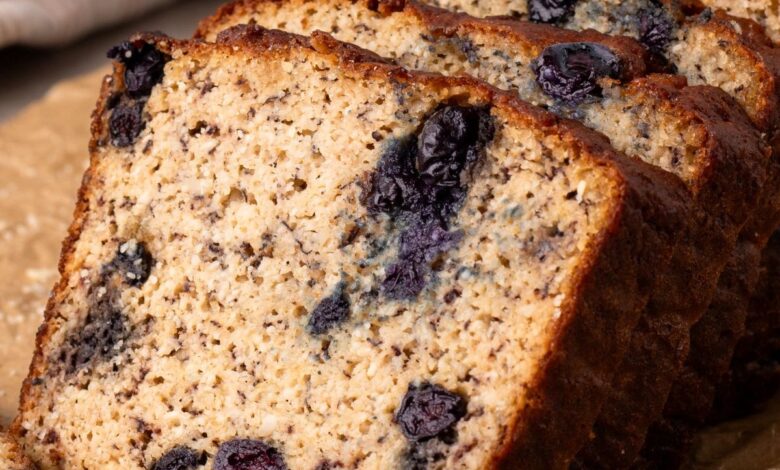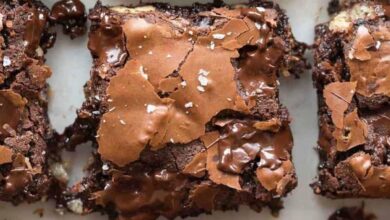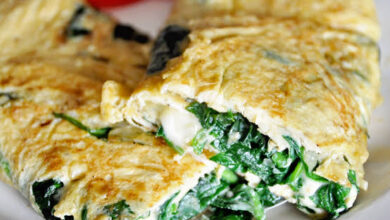Protein Banana Bread with Blueberries

Introduction
Protein Banana Bread with Blueberries is a wholesome, delicious twist on traditional banana bread that packs in extra protein to fuel your day. Perfect for breakfast, post-workout snacks, or a healthy dessert, this loaf combines the natural sweetness of ripe bananas with the juicy burst of blueberries in every bite.
Unlike most banana breads that are loaded with sugar and refined flour, this version uses protein powder and healthier ingredients to keep you satisfied longer. The blueberries add not just flavor, but also antioxidants and a pleasant tartness that balances the richness of the bread.
Whether you’re looking to boost your daily protein intake or just want a nutritious treat, this recipe is easy to make and freezer-friendly. Plus, it’s a great way to use up overripe bananas and can be adapted with gluten-free or dairy-free options if needed.
⏲️ Cooking Time & Servings
-
Prep Time: 10 minutes
-
Cook Time: 45–50 minutes
-
Total Time: ~1 hour
-
Servings: 10 slices
🧾 Ingredients
Dry Ingredients:
-
1 cup oat flour (or rolled oats blended into flour)
-
1/2 cup vanilla protein powder (whey or plant-based)
-
1 tsp baking soda
-
1/2 tsp baking powder
-
1/2 tsp cinnamon
-
1/4 tsp salt
Wet Ingredients:
-
2 medium ripe bananas, mashed
-
2 large eggs
-
1/4 cup unsweetened almond milk (or any milk)
-
1/4 cup maple syrup or honey
-
2 tbsp coconut oil or melted butter
-
1 tsp vanilla extract
Add-Ins:
-
3/4 cup fresh or frozen blueberries (do not thaw if frozen)
-
Optional: 1/4 cup chopped walnuts or pecans
👩🍳 How to Make Protein Banana Bread with Blueberries
Step-by-Step Instructions:
-
Preheat Oven:
Preheat your oven to 350°F (175°C). Line a 9×5-inch loaf pan with parchment paper or lightly grease it. -
Mix Dry Ingredients:
In a large bowl, whisk together the oat flour, protein powder, baking soda, baking powder, cinnamon, and salt. -
Mix Wet Ingredients:
In another bowl, mash the bananas, then mix in the eggs, almond milk, maple syrup, coconut oil, and vanilla extract until smooth. -
Combine Wet and Dry:
Pour the wet ingredients into the dry mixture. Stir gently until just combined—do not overmix. -
Fold in Blueberries:
Gently fold in the blueberries (and nuts, if using). -
Bake the Bread:
Pour the batter into the prepared loaf pan. Smooth the top and bake for 45–50 minutes, or until a toothpick inserted into the center comes out clean. -
Cool and Serve:
Let cool in the pan for 10 minutes, then transfer to a wire rack. Slice and enjoy warm or at room temperature.
📝 Notes
-
Banana Tip: The riper the bananas, the sweeter and more flavorful your bread will be.
-
Protein Powder: Use a protein powder you enjoy the taste of—vanilla or unflavored works best.
-
Texture Adjustments: If the batter is too thick, add 1–2 tablespoons more milk.
-
Storage: Store in an airtight container at room temperature for 2 days or refrigerate for up to 5 days. Freezes well for up to 3 months.
❓ FAQs
Can I use frozen blueberries?
Yes! Add them frozen directly to the batter. Don’t thaw to prevent excess moisture and color bleeding.
Can I make this banana bread gluten-free?
Yes, use certified gluten-free oat flour or a gluten-free flour blend.
What kind of protein powder works best?
A mild-flavored vanilla whey or plant-based protein works well. Avoid powders with strong aftertastes.
Can I make this dairy-free?
Yes, use plant-based milk and a dairy-free protein powder.
🍽️ Nutrition Information
| Nutrient | Per Slice (1 of 10) | Entire Loaf |
|---|---|---|
| Calories | 190 | 1,900 |
| Protein | 9g | 90g |
| Total Fat | 6g | 60g |
| Saturated Fat | 3g | 30g |
| Carbohydrates | 24g | 240g |
| Sugars | 9g | 90g |
| Fiber | 3g | 30g |
| Sodium | 180mg | 1,800mg |
| Potassium | 200mg | 2,000mg |
Note: Nutritional values are estimates and may vary depending on the brand of protein powder and ingredients used.
⚠️ Disclaimer
While this Protein Banana Bread with Blueberries is a healthier alternative to traditional banana bread, it should still be enjoyed in moderation as part of a balanced diet. Individuals with allergies to eggs, dairy, nuts, or gluten should check labels carefully or use appropriate substitutes. When trying new protein powders, it’s recommended to start with small amounts to ensure they agree with your digestive system.




